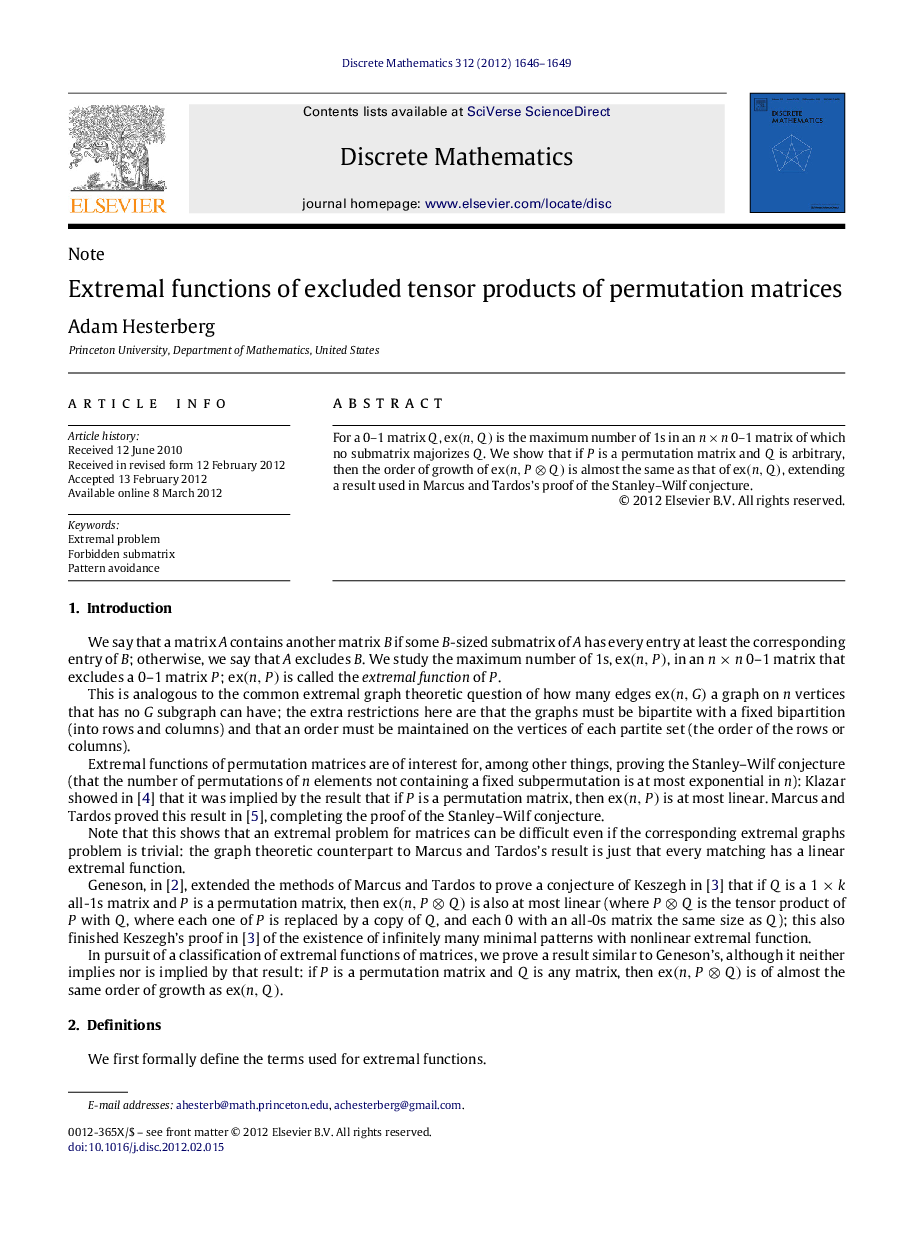| Article ID | Journal | Published Year | Pages | File Type |
|---|---|---|---|---|
| 4648091 | Discrete Mathematics | 2012 | 4 Pages |
Abstract
For a 0–1 matrix QQ, ex(n,Q)ex(n,Q) is the maximum number of 1s in an n×nn×n 0–1 matrix of which no submatrix majorizes QQ. We show that if PP is a permutation matrix and QQ is arbitrary, then the order of growth of ex(n,P⊗Q)ex(n,P⊗Q) is almost the same as that of ex(n,Q)ex(n,Q), extending a result used in Marcus and Tardos’s proof of the Stanley–Wilf conjecture.
Keywords
Related Topics
Physical Sciences and Engineering
Mathematics
Discrete Mathematics and Combinatorics
Authors
Adam Hesterberg,
